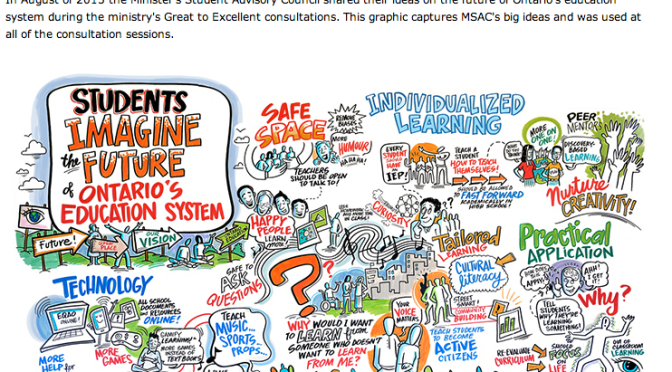Written and shared by Deborah McCallum
I have been doing a lot of thinking lately about what learning is going to look like for our students in the future, and how education needs to change, to meet the needs of society. There are great leaders and movements starting up in Ontario that are helping to support educators and promote new and improved learning for our students.
Indeed, I believe that these new movements need to include embracing eLearning and blended learning environments as frameworks and catalysts for facilitating and activating successful learning for our students.
Today’s education system is outdated in many ways. Structures and institutions are built upon values from the Industrial era. Our students are no longer growing up in this era. There are new opportunities to learn, and learning can look different in different communities and families, cultures. Society has changed in many ways. As Steven Hurley stated in his opening speech at the On The Rise Conference (OTRK12) – desks may be organized in groups, but alas, they are still the same desks!

We have new technologies that have permeated the rest of our world, our economies are changing rapidly, and job security and stability will not mean the same things for our children as they did for our parents generations. Further, due to the rapidly changing society of technology, there will be different futures emerging for our students in terms of what jobs will be available. We have opportunities now for students to engage in a variety of learning experiences and a variety of literacies that we can promote to help them navigate uncertainty and follow their passions – literally right at our finger tips! Indeed, it is a very exciting time.
What do students need to succeed?
As I consider what it is that our students will need to succeed in their futures, I always come back to ‘Higher Order Thinking Skills’. Without a doubt, these are the skills that future generations need to count on to succeed in any job, career, or learning environment.
Knowledge construction, metacognitive elements of learning, reflection, critical thinking, flexible decision making, imagination and creativity are just some of the skills that will be necessary.
Technology has come so far that it is so intuitive for anyone to use, but, the higher order thinking skills still need to be in place to make the most out of these learning opportunities and technologies. eLearning and blended learning environments will continue to grow, and therefore, we need to consider how to apply higher order thinking skills to the eLearning environment.
eLearning & Blended Learning
I had the amazing opportunity to be a part of a workshop at ORTK12 where we co-created an iBook on eLearning. What a brilliant idea to bring together educators to help describe this as something beautiful that can be presented to parents, teachers, students, administrators to understand these new virtual learning spaces that we can create for our students.
I look forward to these new spaces and places for learning, and more importantly learning how to effectively integrate the higher order thinking skills into these new paradigms of learning!
Deborah McCallum
Educator and Learner investigating the intersection between Knowledge Building, Indigenous perspectives, Edtech, Digital Citizenship & New Pedagogies for the 21st Century. Desire2Learn Instructor for AQ & OntarioLearn Highered; Teacher-Librarian Specialist; Science & Technology; Counselling Pychology, GD.
bigideasineducation.wordpress.com
@bigideasinedu
www.facebook.com/thebigideasineducation
Photo Credit:
alles-schlumpf via Compfight cc





